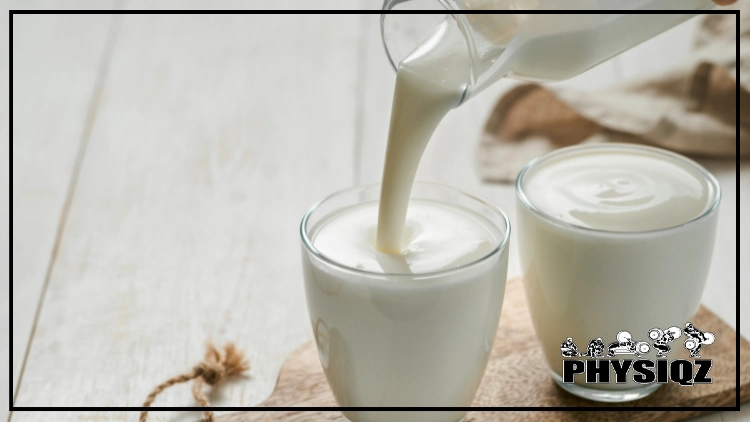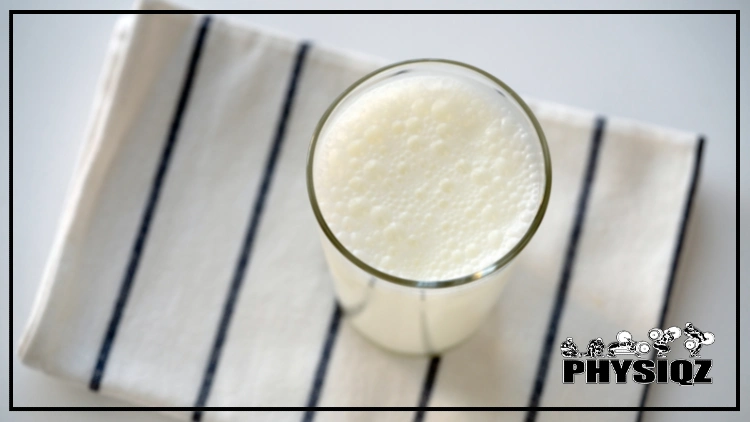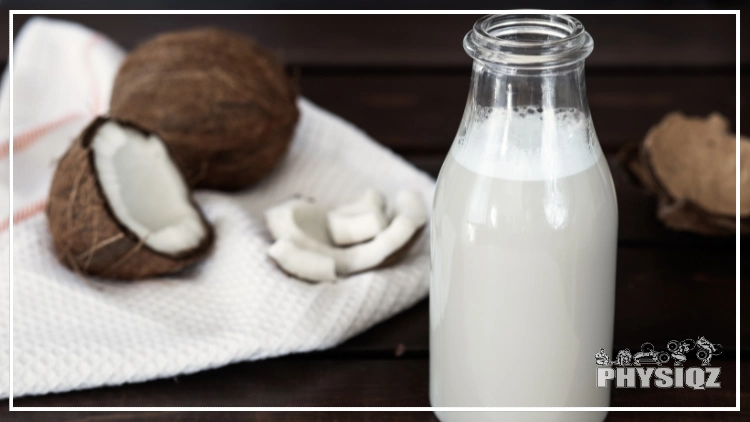
Many people on the keto diet often ask if buttermilk is keto-friendly, which can be confusing.1 According to a chef, most people make this #1 keto mistake when consuming buttermilk: considering a full cup in one serving.
But, understanding the nutritional composition of this delicious ingredient can help anyone on keto to figure out how to incorporate it into their diet.
Keep reading to find out whether buttermilk is keto-friendly and everything else about buttermilk.
Is Buttermilk Compatible with a Keto Diet?
The term buttermilk can be pretty confusing when figuring out if the ingredient or drink is keto friendly. Taking it at face value might have one thinking buttermilk is high in butter. But, surprisingly, buttermilk doesn’t have butter – it is low in fat.
Buttermilk is a cultured dairy product made by adding bacteria to milk, which causes it to thicken and form curd.2 It has a creamy, sour, and slightly tangy taste. Traditionally, buttermilk was made by churning out butter from cream. However, today’s buttermilk is not a byproduct of removing butter from milk. Instead, it is made by using lactic acid bacteria to ferment pasteurized milk. This process makes buttermilk thicker, more acidic, and tangier than the traditional one.

Source: Fascinadora via Canva.com3
Buttermilk is used in its own right as a drink and an ingredient for baking and cooking. It can be used as an ingredient or an additive to enhance the flavor of foods such as pancakes, waffles, biscuits, and muffins.
A diet that follows the principles of keto (low-carb) typically permits individuals to consume 20-50 grams of net carbs per day to sustain ketosis.4 It’s also a good rule of thumb to keep the total carbs per meal under 18g. In addition, generally speaking, snacks shouldn’t exceed eight total carbs.
That means a meal is keto friendly if its net carbs fall within the approved range of a person’s macros requirements. Also, an individual’s level of restraint when taking the edible is critical when figuring out if a product is keto friendly.
Now, a standard serving cup (245g) of buttermilk contains 13.1g grams of total carbs.5 Assuming that an individual consumes the entire cup in one serving in the morning. That means they have spent half of their carb budget in one instance.
They are limited on how much carbs they can take further. That is if their net daily carbs limit is 20g. In such an instance, buttermilk is not keto friendly.
But a cup of buttermilk can be more keto-friendly for individuals with a daily carbs allotment of 50 grams. If they take a cup in the morning, they will still have some leeway for later meals.
So, Buttermilk is keto friendly when used in a small portion (1 tablespoon) for baking or cooking. However, consuming a cup of buttermilk in one serving is not keto-approved since it constitutes a significant amount of carbs.
If you’re curious about ways to jump-start weight loss, cutting back on your buttermilk portions can be an effective method for decreasing calorie and sugar intake.
How Many Carbs Are in Buttermilk?
When figuring out if buttermilk is keto-friendly, it is essential to understand its total and net carbs facts. Total carbs are the sum of a food’s carbohydrate content. On the other hand, net carbs are the number of carbohydrates in a food minus fiber and sugar alcohol.
Net carbs are what count on a ketogenic diet. They break down during digestion into individual sugars like glucose and are absorbed into the blood through the help of insulin.
A serving cup of The Saco Pantry cultured buttermilk, 13 grams of total carbohydrates, and 12 grams of sugar (net carbs). Here are the nutritional facts of buttermilk.6
Is Buttermilk Ranch a Keto-Friendly Dressing?
When starting on keto, many newcomers to nutrition often inquire about the keto-friendliness of buttermilk ranch dressing. Well, the answer to this question depends. Generally speaking, buttermilk ranch is low in carbs and keto-friendly when the consumer chooses the right brand and consumes the right portion.

Source: burakkarademir via Canva.com7
The brand’s nutrition facts and the portion per serving determine whether a particular food is keto-friendly or not. An individual will find one buttermilk ranch that is 100% keto friendly. Surprisingly, they can walk into another store and find another ranch product full of added sugars and preservatives.
So, whether buttermilk ranch is keto or not, depends. As such, it’s critical for anyone on a ketogenic diet to read the nutritional label on a pack before using buttermilk.
Most ranch dressings contain nutrients featuring 2g (or less) total carbs, 13g total fat, and 130 calories per 2-tablespoon serving (30ml).8 Thus, people on keto can use buttermilk ranch for salad dressing or as a burger topper without throwing them off ketosis. But, as usual, it’s prudent to confirm the product’s nutritional label before use.
Common Ranch Dressing Brands That Use Buttermilk
Often, people on keto wonder what brand of ranch dressing is keto friendly. As such, it is vital to know which popular ranch brands are low-carb and keto-friendly before walking into a grocery store. Below are some common ranch brands, their carbs amount, and serving size eaten.
Hidden Valley Ranch: This is one of the most popular brands, ideal for dressing and as a condiment. The Original Hidden Valley Ranch Dressing has 2g net carbohydrates and 130 calories per 30ml (2-tablespoon) serving.9
That means people taking a keto diet can use one serving of Hidden Valley ranch daily while staying within the keto rules. However, the brand has a light version of ranch dressing with 4g total carbohydrates per 30ml serving. People on keto should be cautious when using this variant to avoid being thrown off ketosis.
Kraft Ranch Dressing: This brand is used for dressing and dipping most dishes. A serving size of 2 tablespoons (30g) offers 110 calories, 11g of total fat, and 2g of total carbohydrates.10 The low carbs count makes Kraft Ranch Dressing a keto-friendly brand. However, people taking a ketogenic diet should maintain the use of this ranch dressing at minimal levels to remain within keto macros.
However, the Single Serve Fat-Free variant contains more carbs (4g) per serving. As such, users on keto should be careful not to overeat added sugars. It’s always prudent to read the Kraft Ranch label before use.
Primal Kitchen Ranch Dressing: This brand uses avocado oil (a keto-friendly oil) to make ranch dressing. At a 30ml serving, this ranch contains 100 calories, 11g total fat, and 3g of total carbohydrates.11 The high-fat content and low carbs make Primal Kitchen Ranch Dressing keto friendly.
Also, its ingredients, such as avocado oil and pasture-raised organic eggs, make a rich source of healthy fats for individuals following a ketogenic diet. Thus, this product can be used to add flavor to chicken wings or keto pizza topping while remaining within daily keto macros.
Is Buttermilk Good or Bad for You?
Buttermilk can have several health benefits when used appropriately in the world of keto. It is a rich source of valuable nutrients such as proteins, calcium, vitamin A, vitamin D, riboflavin, and probiotics. However, buttermilk may have shortcomings, such as high amounts of sodium and allergic reactions to lactose. The section below explores the health benefits and downsides of buttermilk.
The Health Benefits of Buttermilk
Here are some pros of consuming buttermilk:
It May Be Easier To Digest and Improves Gut Health: Buttermilk contains lactic acid bacteria that make the digestion of lactose much easier. This is especially true for people with lactose intolerance since they lack the necessary enzyme to digest this sugar. They can consume cultured buttermilk with few side effects since fermentation helps break lactose down.12
May Help Lower Blood Pressure: A study with a sample size of 34 people with normal blood pressure sought to establish the effect of buttermilk consumption on blood pressure.13 The participants recorded lower systolic blood pressure, mean arterial blood pressure, and plasma angiotensin-I converting enzyme by 2.6 mm Hg, 1.7 mm Hg, and 10.9%, respectively, compared with placebo.
Mean arterial blood pressure (MAP) is the average blood pressure in a person’s arteries during one cardiac cycle. On the other hand, plasma angiotensin-I converting enzyme (ACE) is the substance responsible for controlling blood pressure.
May Help Lower Cholesterol Levels: Buttermilk contains sphingolipid compounds that may help prevent cholesterol absorption in the gut. In one study, 34 adult participants took 45g of buttermilk mixed with water per day.14 The participants lowered total cholesterol by 3% compared with a placebo. Also, the participants who had bad cholesterol before the study recorded a 3% bad cholesterol drop.
May Strengthen Bones: Buttermilk is a great source of calcium and phosphorus, which are essential nutrients for bone health.15 Other varieties also contain vitamin D and K2, making them useful for maintaining healthy and strong bones. Moreover, these essential nutrients help the body prevent bone diseases like osteoporosis.
May Improve Oral Health: Research suggests that fermented milk by-products such as buttermilk might have an anti-inflammatory effect on oral tissues.16 The intake of calcium in buttermilk is believed to help in the reduction of periodontitis – the inflammation of gums. As such, buttermilk may be beneficial for persons with oral inflammation caused by periodontal bacteria or treatments like chemotherapy.
The Downsides of Buttermilk
Below are some of the shortcomings of buttermilk:
High Salt Content: Buttermilk contains high sodium content, which can cause high blood pressure if taken excessively. Thus, it is essential to read the product label if an individual wants to limit dietary salt intake. Consuming too much sodium can cause damage to organs like the brain, kidneys, and heart.
Lactose Intolerance and Allergic Reactions: Though buttermilk is easier to digest than other dairy milk products, some people may still experience lactose intolerance after consuming it. Plus, people with milk allergies should avoid buttermilk completely.
Keto Substitutes for Buttermilk
Buttermilk is a delicious drink and ingredient, but the keto-friendly portions are very minimal. And when figuring if buttermilk is keto approved, it is also vital to find more keto-friendly buttermilk substitutes.
This is especially true for those who want to avoid added sugar as one of their weight loss solutions.
But, finding a perfect replacement can be daunting. Nevertheless, some combinations can serve buttermilk’s purpose without throwing an individual off ketosis. Below are the common keto-friendly buttermilk substitutes.
Unsweetened Coconut Milk & Vinegar
Unsweetened coconut milk is low-carb and can be rich in fat. People on the keto diet can mix it with an acid such as vinegar to make a buttermilk replacement. Add one tablespoon of vinegar to one cup of unsweetened coconut oil to make a buttermilk substitute.

Source: AndreaMeling via Canva.com17
A 240ml cup serving of unsweet coconut milk contains 1.0g of total carbs, making it a suitable buttermilk alternative.18 However, some brands contain more carbs, so it’s critical to read the label before consuming it.
Also, coconut water is unfit for keto, so use coconut milk.
Unsweetened Cashew Milk & Vinegar
Cashew milk is a suitable alternative to dairy milk because it is lower in carbohydrates. Mixing one cup of unsweetened cashew milk and adding one tablespoon of vinegar will produce keto-friendly buttermilk.
The serving size of 1 cup of unsweetened cashew milk contains 1g of net carbohydrates, which is significantly keto-friendly.19
Unsweetened Almond Milk & Lemon
Unsweetened almond milk is keto-friendly plant-based milk. Adding 240ml of unsweetened almond milk to lemon produces a buttermilk alternative. A 240ml cup of unsweet almond milk contains 1g net carbs, a suitable amount for keto.
Heavy Whipping Cream & Vinegar
Heavy whipping cream is an ingredient used in various recipes like sauces, soups, and ice creams. It is rich in fat since it is extracted from the high-fat portion of fresh milk. It’s also relatively low in carbs as a 120g cup contains 3.55g total carbohydrates.20
A mixture of 60g of heavy whipping cream with one tablespoon of vinegar can make a keto-acceptable alternative to buttermilk.
How To Make Homemade Buttermilk That’s Keto Approved (Recipe & Steps)
Making homemade keto-friendly buttermilk is easy. Below is a recipe and steps for making keto-approved buttermilk at home using heavy whipping cream and acid.
Ingredients and things needed:
- 1 cup heavy whipping cream
- measuring cup
- mixing bowl
- 1 tablespoon of vinegar powder or lemon juice.
Steps to Make Homemade Buttermilk:
Step 1: Measure 1 cup of heavy cream into the mixing bowl
Step 2: Add one tablespoon of vinegar or lemon juice to the cream.
Step 3: Stir the mixture
Step 4: Let the mixture sit for five to ten minutes. The cream will start to form a cud, and it’s ready for use.
Note: Heavy whipping cream is high in fat and low in carbs, and it’s more keto-friendly than regular milk.
A 1-cup serving (245g) of buttermilk has a whopping 13g of carbs, and it is not recommendable to consume it all when on keto. However, using one tablespoon of buttermilk daily for baking or cooking is advisable to stay within the daily carbs allotment for keto.
In addition, individuals on keto might consider using keto-friendly alternatives.
For example, a mixture of heavy whipping cream and vinegar or lemon can make keto-approved homemade buttermilk. So, yes, buttermilk is keto-friendly when used in a small portion for cooking or baking.
References
1gunnar3000. “milk splash.” Canva, 13 December 2011. Accessed 13 April 2023. <https://www.canva.com/photos/MAC9S6hTR5o-milk-splash/>
2Buttermilk. (2022, October 18). In Wikipedia. <https://en.wikipedia.org/w/index.php?title=Buttermilk&action=history>
3Fascinadora. Canva. Accessed 13 April 2023. <https://www.canva.com/photos/MAD--Sng-M0-pouring-homemade-kefir-buttermilk-or-yogurt/>
4Harvard T.H. Chan School of Public Health. Diet Review: Ketogenic Diet for Weight Loss. <https://www.hsph.harvard.edu/nutritionsource/healthy-weight/diet-reviews/ketogenic-diet/>
5USDA. Milk, buttermilk, fluid, cultured, low fat. <https://fdc.nal.usda.gov/fdc-app.html#/food-details/170874/nutrients>
6The Saco Pantry. Cultured Buttermilk Blend. <https://shop.sacopantry.com/products/cultured-buttermilk-blend?variant=23208813255>
7burakkarademir. Canva. Accessed 13 April 2023. <https://www.canva.com/photos/MAEFhbb9hcU--ayran-turkish-drink-buttermilk/>
8USDA. Salad dressing, ranch dressing, regular. <https://fdc.nal.usda.gov/fdc-app.html#/food-details/173592/nutrients>
9Hidden Valley. The Original Ranch. <https://www.hiddenvalley.com/products/ranch-condiments/original-ranch/original-bottled-ranch/>
10Kraft Heinz. Kraft Ranch Dressing. <https://kraftheinzawayfromhome.com/products/10021000643544>
11Primal Kitchen. Ranch Dressing. <https://www.primalkitchen.com/products/ranch-dressing#component-product-ingredients>
12Alm, L. (1982). Effect of fermentation on lactose, glucose, and galactose content in milk and suitability of fermented milk products for lactose intolerant individuals. Journal of dairy science, 65(3), 346-352 <https://pubmed.ncbi.nlm.nih.gov/7076958/>
13Conway, V., Couture, P., Gauthier, S., Pouliot, Y., & Lamarche, B. (2014). Effect of buttermilk consumption on blood pressure in moderately hypercholesterolemic men and women. Nutrition, 30(1), 116-119 <https://pubmed.ncbi.nlm.nih.gov/24206823/>
14Conway, V., Couture, P., Richard, C., Gauthier, S. F., Pouliot, Y., & Lamarche, B. (2013). Impact of buttermilk consumption on plasma lipids and surrogate markers of cholesterol homeostasis in men and women. Nutrition, Metabolism and Cardiovascular Diseases, 23(12), 1255-1262. <https://pubmed.ncbi.nlm.nih.gov/23786821/>
15Price, C. T., Langford, J. R., & Liporace, F. A. (2012). Essential nutrients for bone health and a review of their availability in the average North American diet. The open orthopaedics journal, 6, 143. <https://www.ncbi.nlm.nih.gov/pmc/articles/PMC3330619/>
16Panahipour, L., Nasserzare, S., Amer, Z., Brücke, F., Stähli, A., Kreissl, A., … & Gruber, R. (2019). The anti-inflammatory effect of milk and dairy products on periodontal cells: an in vitro approach. Clinical oral investigations, 23(4), 1959-1966. <https://pubmed.ncbi.nlm.nih.gov/30238412/>
17AndreaMeling. “Coconut milk.” Canva. Accessed 13 April 2023. <https://www.canva.com/photos/MADF1zkiikQ-coconut-milk/>
18USDA. Unsweet Cococnutmilk. <https://fdc.nal.usda.gov/fdc-app.html#/food-details/1886572/nutrients>
19USDA. Unsweet Creamy Cashewmilk With a Touch of Almond. <https://fdc.nal.usda.gov/fdc-app.html#/food-details/2283405/nutrients>
20USDA. Cream, fluid, light whipping. <https://fdc.nal.usda.gov/fdc-app.html#/food-details/170858/nutrients>